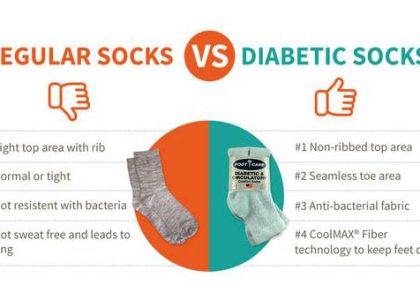In the context of changing conditions, telemedicine healthcare is becoming increasingly popular around the world in primary health care. This special medical system has opened new doors in the health system which is benefiting all classes of people.
What is telemedicine and why is it becoming so popular? Telemedicine is a medical system where a patient is treated by using a variety of electronic devices such as mobile phones, computers, cameras, etc. to detect the type of illness from a distance, as opposed to physically appearing to the doctor. In relatively complex diseases, post-treatment follow-up. The method is highly effective and quite cost-effective in a number of areas, including dose adjustment.
However, telemedicine healthcare should be kept in mind that telemedicine is not an alternative to the mainstream medical system but only its complement. According to the World Health Organization, telemedicine is healing from a distance. This arrangement frees the patient from the obligation to visit the doctor at a specific place at a specific time in case of receiving health care. During this pandemic situation workers must follow thd.co/homehealthcheck to get the best health service.
History of Telemedicine Healthcare:
Although it is difficult to say exactly when telemedicine healthcare was first introduced, a review of history shows that in 1924, the United States introduced a system of remote medical treatment using a special type of radio.
In 1947, doctors in Pennsylvania were able to provide the first medical report from one place to another. Canadian radiologists later set up a network to exchange radiology reports in and around Montreal.
In 1959, physicians at the University of Nebraska used telescopes to distribute neurological test reports to students on their campus, and the process provided ample opportunity for mutual discussion. However, the US military first introduced telemedicine on a large scale.
Between 1970 and 1980, NASA, the Department of Public Health, and the military spent a lot of money and time in the telemedicine sector. Which laid the foundation for modern telemedicine. With the passage of time and the advancement of technology, telemedicine gradually took on a modern form.
Types Of Telemedicine Healthcare:
1. Real-time Telemedicine:
Another name for this method is live telemedicine or interactive telemedicine. Here patients and doctors can see and hear each other directly through electronic devices even though they are in a remote location. Here patients and doctors may want to know the answers to their required questions. The biggest advantage of this process is the opportunity to understand the patient’s mental and physical language as well as the opportunity to gain a thorough understanding of physical observation, medical report evaluation, and other relevant matters.
2. Remote Patient Monitoring:
Another name for this method is the self-monitoring or self-testing method. In this process, using a medical device, the patient can sit at home and find out about his health condition or clinical symptoms. This method is more commonly used in chronic diseases such as cardiovascular disease, asthma, diabetes monitoring. Although this method has advantages, it is easy, affordable, and patient-friendly.
3. Store and Forward:
Another name for this method is asynchronous telemedicine. Here the patient sends all his medical records, necessary pictures, videos, or all other information to the doctor in a special system and the doctor gives the prescription based on the documents sent at his convenience. This method is most commonly used in the treatment of dermatology, radiology, and pathology.
Benefits of Telemedicine Healthcare:
The beneficial role of telemedicine in many respects is undeniable. Telemedicine is a very affordable medical system. Where a mobile phone or a computer with a camera is enough as medical equipment. In addition, there are medical record keeping and the following facilities.
1. Travel cost or extra time is not wasted:
Since there is an opportunity to receive treatment from a distance, there is no need to go to the doctor’s chambers, it does not cost travel, and do not have to wait long to get the doctor’s serial.
2. Opportunity to seek the services of specialist doctors:
People in remote areas where there is a shortage of specialist doctors can get the opportunity to seek expert advice through telemedicine if they want. In this case, there is an opportunity to choose both real-time and store and forward methods.
3. Provide treatment at a convenient time:
If the doctor wants, he can send the patient at the time of his choice by checking the pictures, videos, medical history, tests, and other reports and give necessary advice to ensure the best use of the time of the busy doctor.
4. Decreased chances of infection:
In some cases, there is a risk of infection from the patient waiting in the doctor’s room, but in the case of telemedicine, there is no chance of this happening.
5. Special benefits for the elderly and children:
It is very difficult and inconvenient in many cases to take the elderly or the child with a chronic disease to the doctor all the time. Telemedicine can play a very helpful role in this.
The Challenges of Telemedicine Healthcare:
1. Cyber Security:
In telemedicine, since data is exchanged through electronic media, hackers can resort to hacking for necessary information.
2. Technical Skills:
Minimum technical skills are required to get telemedicine services but in many cases, it is missing which can create obstacles.
3. Internet facility:
Internet facility is one of the regulators for getting telemedicine service but it cannot be said that 100% area or people are covered by internet service i.e. it is difficult for them to get this service.
4. Difficulties in prescribing:
Although it is now possible to provide prescriptions remotely through a number of software, the recipient has to have special advantages which are not possible in many cases.
5. Legal complexities:
Many countries have not yet developed similar laws or regulations for telemedicine, making it difficult to determine the rights of service providers and recipients. Even in countries with large sizes, the law differs from state to state, which is even more problematic because the geographical location does not become a major regulator in the field of telemedicine.
6. Lack of access to emergency services:
Telemedicine is very unsuitable for emergency services such as heart attack, stroke, fracture, amputation, or any service where the service provider has direct handwork. Because in these cases there is no option to see the patient and doctor directly.
Conclusion:
Telemedicine healthcare is currently 16.6 billion industries with an annual growth rate of 16.4%. In other words, this industry is growing rapidly and there is less opportunity to be different from it. We need to pay more attention to telemedicine in order to reduce the pressure on the outpatient department of the hospital. The benefits to the service providers and recipients, to reach healthcare to all, to reduce the medical expenses, etc.









